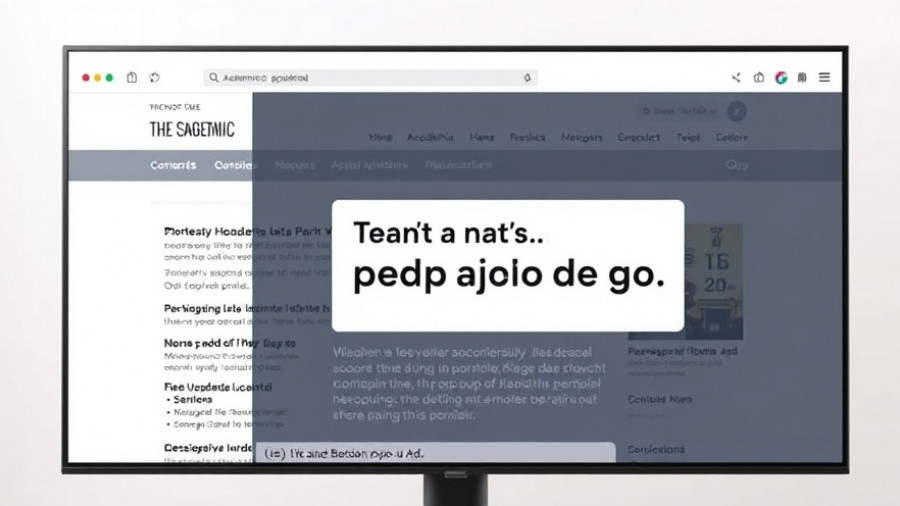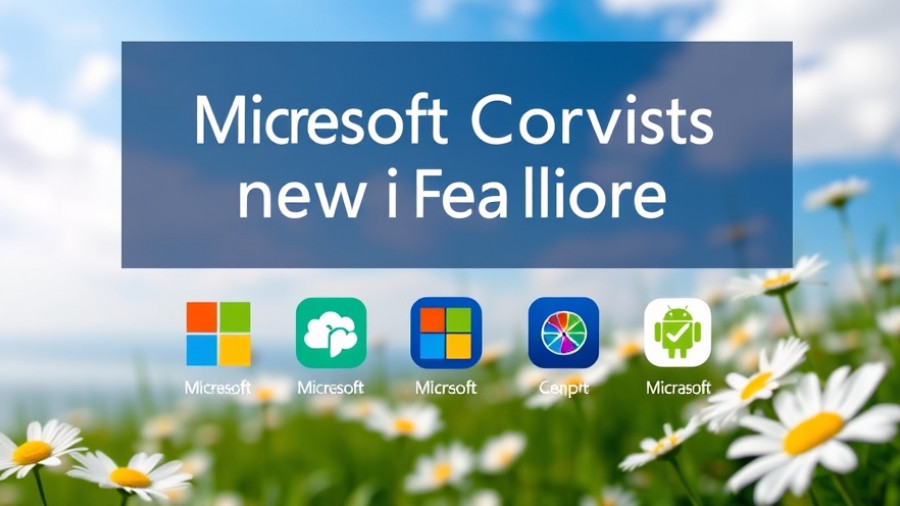
Microsoft's Leap in AI: Introducing In-House Models
Microsoft has taken a significant step in the competitive landscape of artificial intelligence by unveiling two new in-house AI models: MAI-Voice-1 and MAI-1-preview. This strategic move marks a decisive shift towards independence from OpenAI as Microsoft seeks to carve out a robust position in the AI sector.
Understanding MAI-Voice-1 and MAI-1-preview
MAI-Voice-1 represents Microsoft's foray into natural speech generation and is currently being utilized in its Copilot Daily and Podcast features. On the other hand, MAI-1-preview is the company's first end-to-end foundation model, which aims to revolutionize how AI processes and generates text. Microsoft has initiated public testing for MAI-1-preview on LMArena, allowing users to engage with the new technology and provide feedback before broader implementation.
The Efficiency Behind Microsoft's Models
At the forefront of this development is a focus on efficiency and cost-effectiveness. Mustafa Suleyman, head of Microsoft's AI division, noted that MAI-Voice-1 operates on a single GPU, while MAI-1-preview was trained on approximately 15,000 Nvidia H-100 GPUs. For comparison, competing models like xAI's Grok required over 100,000 GPUs, illustrating how Microsoft aims to refine AI training processes. Suleyman emphasized that the key to success lies in choosing the ideal data and optimizing model training—ensuring every computational resource contributes to effective learning.
Independence from OpenAI: A Bold Strategic Direction
Microsoft's decision to develop its own AI models signals its intention to lessen its reliance on OpenAI technologies, despite significant investments in the latter. The creation of these models indicates a long-term commitment to building competitive capabilities in-house, as outlined in Microsoft’s expansive five-year roadmap for AI development. Suleyman's vision paints a picture of not only competing but thriving amidst potential market disruptions, particularly as some industry experts voice concerns about an impending bubble in AI investments.
The Implications for Microsoft's Copilot
While MAI-Voice-1 represents a new chapter for Microsoft’s AI capabilities, it’s important to note that the primary architecture for Copilot still utilizes OpenAI’s technologies. However, Fed up with limitations and wanting more flexibility, Microsoft’s strategy seems to pivot toward establishing a comprehensive and versatile AI suite that could redefine user experiences across its products.
Future Predictions: What Lies Ahead for AI?
With Microsoft's aggressive ambition to further develop its AI technology in a landscape already filled with juggernauts, the success of MAI-Voice-1 and MAI-1-preview will be closely watched. Industry analysts predict that the next five years will see intensified competition, leading to breakthroughs in areas such as natural language processing and speech synthesis. The direction Microsoft chooses could serve as a bellwether for the future of AI development, particularly in how proprietary models can effectively stand against established offerings.
Exploring Broader Implications of AI Development
As companies like Microsoft pursue the ambitious goal of mastering AI, the implications extend beyond enhanced software functionalities. Advances in AI could analyze user data more efficiently and offer personalized content, driving deeper engagement across platforms. However, ethical considerations will also need to keep pace, as concerns about user privacy and data security continue to rise. Companies developing AI must find a balance between innovation and responsibility, laying down the groundwork for a future where AI enhances rather than compromises trust.
Conclusion: The Call for Innovation in AI
With Microsoft’s investment in these in-house AI models, the landscape of artificial intelligence is evolving rapidly. As the firm continues to refine its approach and expand its capabilities, the tech community and consumers alike should remain vigilant. Understanding these developments will not only shed light on technological progress but also assist in making informed decisions about engaging with these emerging AI technologies.
 Add Row
Add Row  Add
Add 




Write A Comment